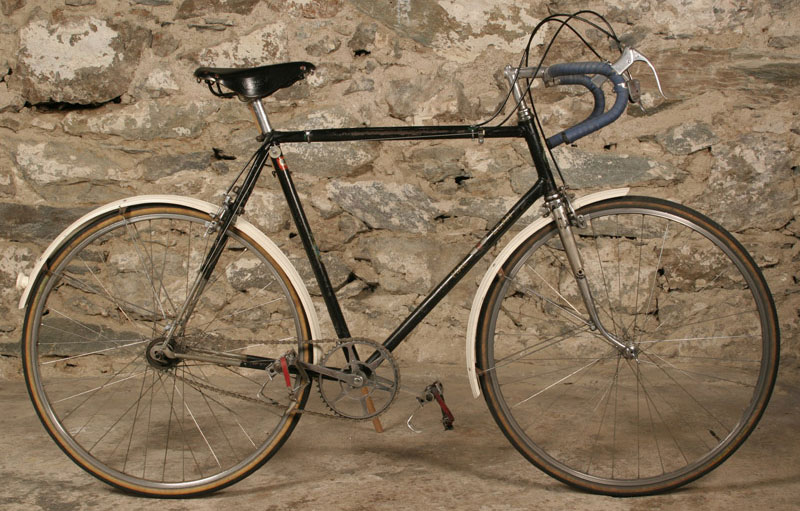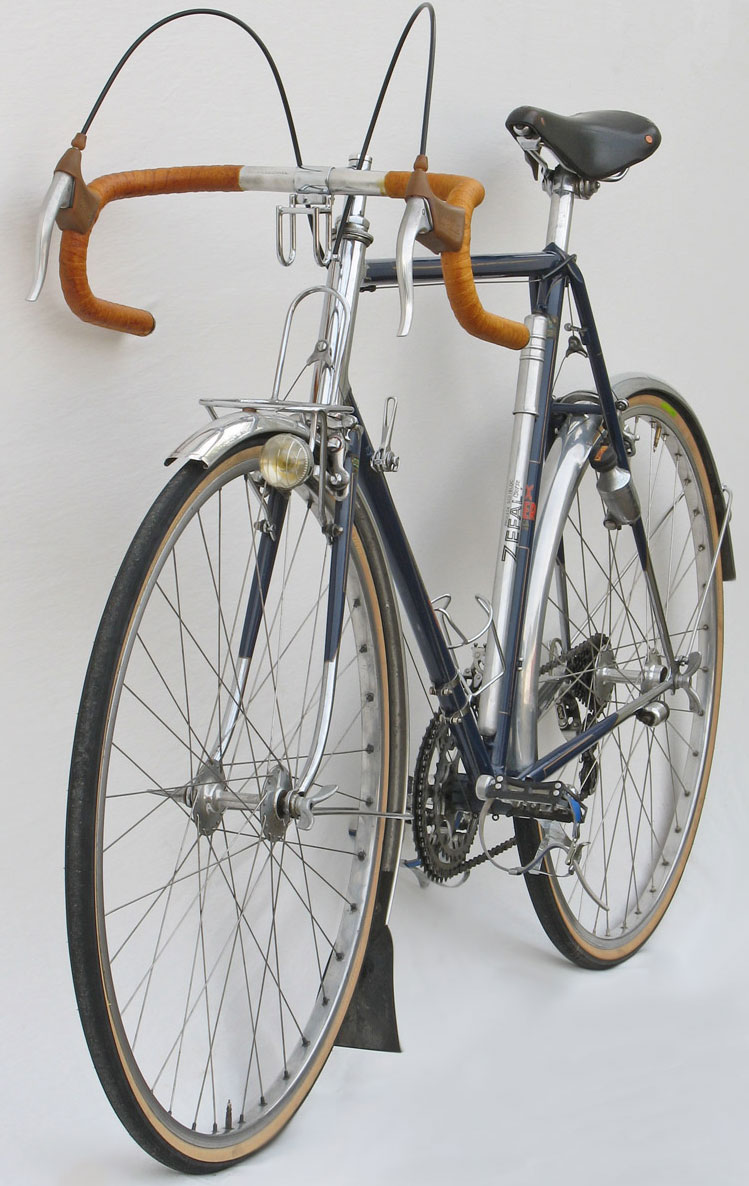Frames Going Soft?

When talking to older cyclists and builders, you sometimes hear that old frames lose their stiffness. This apparently manifests itself in reduced performance – the “snap” is gone from the acceleration when you step on the pedals. On the upside, the bike is said to become more comfortable as the frame gets softer.
Does this really happen? Has the 1957 MacLean in the photo above turned from a sprightly roadburner into a sofa on two wheels? For bikes made from metal, the answer appears to be “No.” Metals do not change their elasticity, no matter how often you flex them, until they reach the point where they break. My 38-year-old Alex Singer has been ridden for 120,000+ miles, yet it should be as stiff today as it was when it was new. So how did the belief that frames “go soft” come into being?
There is the well-known phenomenon that a new bike feels faster. And the rider is more likely to blame their lack of training for a disappointing performance than the new bike they just bought. Once the rider no longer is in love with their new bike, they are more likely to blame the bike, rather than their lack of fitness. It’s easy to see how an old frame could be “starting to go soft” when the owner lusts after a new and shiny machine.
Psychologists also know that people are more likely to experience something if they are told that they will experience it. That brings up an interesting point: Frames “going soft” appear to have been mostly a British and American phenomenon (the two cycling cultures have been closely linked for decades). In France, frames apparently do not “go soft,” but instead are considered essentially eternal. It was common to ride a frame for decades, and then invest significant money into updating it, without worrying that the frame somehow might have lost its performance over time.

The Alex Singer above was built in 1954 with Nivex derailleurs and Alex Singer brakes. After riding it for more than 20 years, including Paris-Brest-Paris and many other strenuous rides, the owner had it refinished during the late 1970s. Braze-ons were removed and others added, and the bike now sports Mafac centerpulls instead of the original Alex Singer cam-actuated brakes and Huret Jubilee derailleurs instead of the original Nivex. The rack was modified for a new headlight and to fit around the Mafac brake arms. Rechroming and repainting completed the renovation, which must have been a considerable investment into a 20-year-old frame. Clearly, the owner had few worries about the frame “going soft.” For him, the bike was as good as new again. It still rides wonderfully today.
What about the old bikes becoming more comfortable as the frame softens with age? I suspect there is a simple explanation: As the rider rides the bike, they adjust the bike to their body, and their body adjusts to the bike, until they obtain that magic “fits like a well-worn glove” feel. So that part of the observation may be real, but the explanation is not that the frame is getting more flexible.
At Bicycle Quarterly, we have learned a lot from the past. If we examine cycling lore carefully, we can learn great lessons of how to make better bikes without getting sidetracked in blind alleys.
Photo credit: Elton Pope-Lance (1957 MacLean).
Postscript: Carbon-fiber components actually do get softer with use. As the component flexes, the internal fibers break free of the surrounding resin and delaminate invisibly. When TOUR magazine tested carbon forks, they found that after 100,000 test cycles, some forks had lost a significant amount of their stiffness. Today, the European Union standards for fatigue resistance specify how much stiffness a carbon component may lose over the test cycle.


